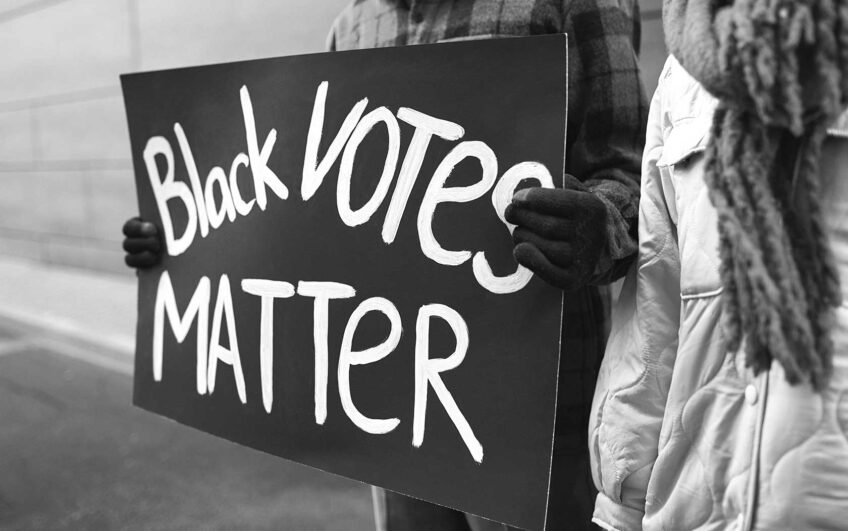Black principals play a key role in transforming education. We need more of them
Although state and local leaders are building comprehensive plans to increase the number of Black teachers, few plans include the recruitment of more Black principals, who play a critical role in Black teachers’ development.
Only 10 percent of public-school principals nationwide are Black, which helps explain why hiring and retaining Black teachers has been so problematic.
The roots of this issue go back to the historic 1954 Brown vs. Board of Education decision, which declared that laws establishing separate public schools for Black and white students are unconstitutional. While the Brown decision requires faculty, administration and student bodies to be integrated, that’s not what happened; as student bodies integrated, Black teachers and principals were dismissed.
This year marks the decision’s 70th anniversary, yet the promise of Brown has not been fulfilled, nor has integration led to taking more seriously the role of Black educators in the lives of Black children.
Before 1954, Black principals played a unique and transformational role in ensuring Black students had Black teachers. Horace Tate, for example, featured in Vanessa Siddle Walker’s book, “The Lost Education of Horace Tate,” was a hero who, beginning in the 1940s, aggressively recruited undergraduate students from historically Black colleges and universities to teach in rural Georgia. He saw Black teacher recruitment and retention as critical to uplifting the Black community. Tate and the Georgia Teachers and Education Association also fought against unfair credentialing practices that strained the Black teacher pipeline.
In the wake of Brown, Leslie T. Fenwick tells in her groundbreaking book “Jim Crow’s Pink Slip,” Black principals lost their jobs in such devastating numbers that a Senate committee hearing was called to investigate the problem in 1971. Lack of support from the Nixon administration meant that those principals had no redress; however, testimony from the riveting hearing preserved the historical record.
Fenwick notes that policy efforts today must acknowledge and deal with the relics of that “systematic dismissal of Black educators from public schools.” Her book calls for a deeper understanding of what has been, should be and can be.
If states are committed to fulfilling the promise of Brown, they must not only rebuild the Black teacher pipeline but also come to grips with the critical role Black principals have played and can play in developing Black teachers. Horace Tate is no relic of history; Black principals are still fighting that fight today. I did.
During my first year as principal of a Mississippi middle school, I fought to recruit Black teachers and retain the ones I already had on my campus. I spent countless hours calling teachers who once taught at the school and trying to convince Black graduates of HBCUs to give our kids a chance to be taught by someone who looked like them and shared their values.
Later, while working at the Mississippi Department of Education, I led state-level efforts to address the state’s critical teacher shortage and increase the share of Black, Latino and Indigenous teachers. We built a comprehensive plan that focused on such policy changes.
We worked with the legislature to amend the law to include more entry points into teacher education programs by adding a provision that takes into account prospective teachers’ GPAs, instead of relying solely on ACT and Praxis scores.
We provided statewide access to training and tutoring for assessments in partnership with our teacher advocacy organizations and focused on building community among Black educators. And we launched the nation’s first state-run teacher residency program for teachers: Our first class of residents, as I recall, was over 70 percent Black.
Many educators, including me, see this work as following in the legacy of Black principals like Tate, and as embodying what activist Mary Church Terrell refers to as “lifting as we climb.”
These stories underline a growing need for state education agency leaders to truly engage with Black principals, understand the need for more of them and recognize how they have effectively done the work of increasing the share of Black teachers.
Any strategy that does not engage Black principals is short-sighted. Professor Jarvis Givens, in his book “Fugitive Pedagogy,” describes “defiance of law and custom, even under threat of violence,” as a marker of Black educational leaders who saw their subversive acts as paramount to improving Black education.
Today’s efforts should no longer be fugitive. In fact, educational leaders should consider these efforts necessary. To start, leaders might support the work of Black school leaders to recruit high-caliber, diverse teachers by scaling grow-your-own and teacher residency programs like we did in Mississippi.
State policymakers must also invest in HBCUs and other institutions (such as Hispanic-serving institutions and institutions serving Native Americans) serving populations underrepresented in teaching and reform existing loan forgiveness programs to make them better recruiting tools for teachers.
If educational leaders fully grasp the profound impact Black principals have on the Black teacher pipeline, they’ll push to increase the share of Black principals — who, for decades, have called for greater attention to Black teacher recruitment and retention.
Phelton Moss is the acting director of American University’s Education Policy and Leadership Program. He is a professor of education policy at American University and a fellow in the Center for Education Innovation at the NAACP.






